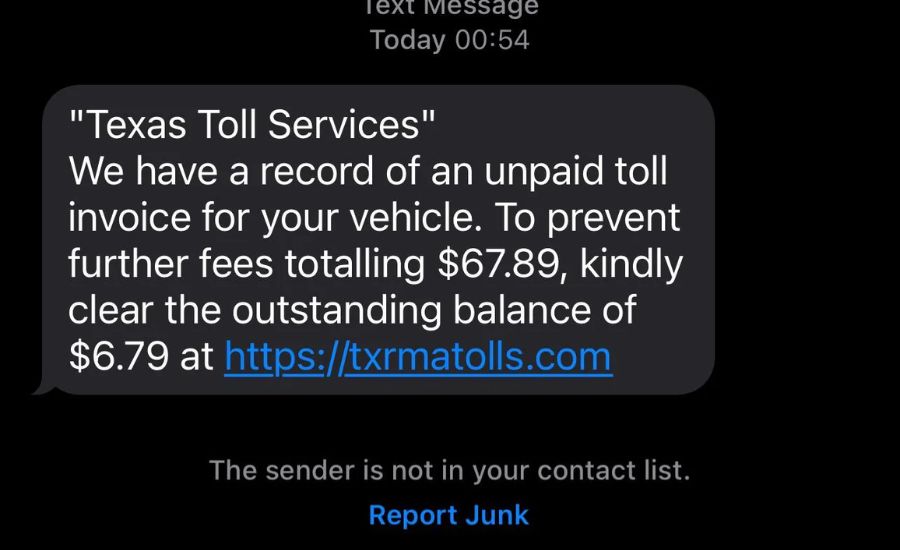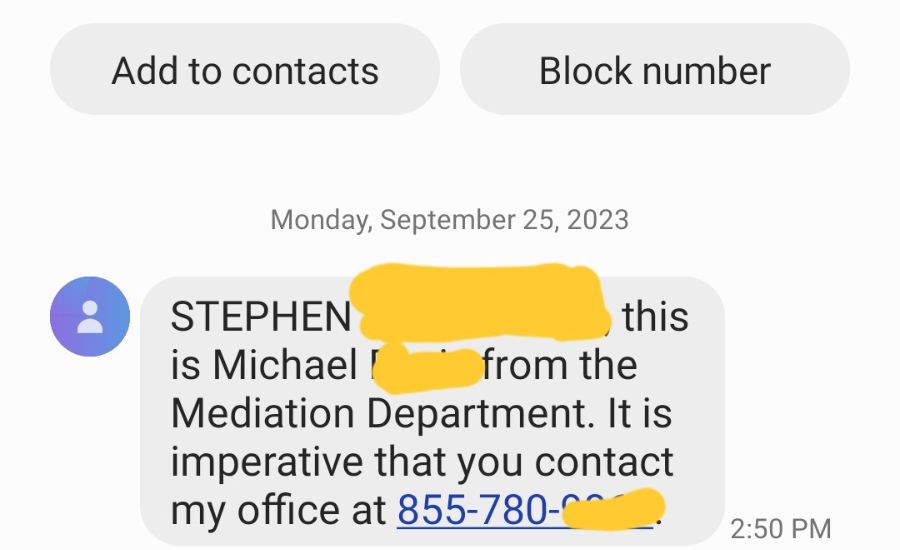1-215-239-1769 Sms, Framework, Regarding & More
Introduction to 1-215-239-1769 Sms
In the modern digital landscape, text messaging has emerged as a crucial channel for businesses and marketers seeking to connect with their audience. However, the rise of SMS marketing has also brought an influx of messages from unknown senders, leading many recipients to question their authenticity. A notable number that has garnered attention is 1-215-239-1769, leaving individuals to wonder about the legitimacy of the messages it sends and the potential risks they may pose.
This article aims to clarify the landscape surrounding 1-215-239-1769 and SMS marketing at large. We will delve into the legal frameworks that govern text message marketing, scrutinize the specific number in question, and provide valuable tips for identifying credible messages. Furthermore, we will offer guidance on safeguarding against SMS scams and share best practices for secure mobile communication as text marketing continues to expand.
Understanding SMS Marketing and Its Legal Framework

SMS marketing has become a potent strategy for businesses aiming to engage consumers effectively. It involves sending promotional or informational text messages to individuals who have opted in to receive such communications. This method is particularly appealing due to its high engagement rates and direct access to consumers’ mobile devices.
What Is SMS Marketing?
SMS marketing encompasses any text messages dispatched by a business for promotional purposes. These messages typically fall into three categories: conversational, informational, and promotional. Each category necessitates varying degrees of consent to comply with privacy regulations surrounding text messaging.
Legal Requirements Governing SMS Marketing
In the United States, SMS marketing is primarily regulated by two key federal laws: the Telephone Consumer Protection Act (TCPA) and the CAN-SPAM Act. The TCPA, established in 1991, controls automated communications via phone calls, faxes, and text messages. It prohibits businesses from sending automated messages to a list of numbers without obtaining explicit written consent.
Conversely, the CAN-SPAM Act focuses on commercial email communications, including messages sent to mobile devices. It mandates certain disclosures in messages, such as clearly identifying them as advertisements, providing a physical address, and offering straightforward opt-out options.
To comply with these regulations, businesses must adhere to several guidelines:
- Obtain Explicit Consent: Secure written consent from individuals before sending any promotional texts.
- Include Opt-Out Instructions: Clearly provide instructions for recipients to unsubscribe in every message.
- Honor Opt-Out Requests Promptly: Ensure that all opt-out requests are processed quickly and efficiently.
- Respect Quiet Hours: Limit text messaging to appropriate hours (from 9 PM to 8 AM in the recipient’s time zone).
Common Concerns Regarding SMS Legality

A significant concern regarding SMS marketing is the potential for spam. Spam texts are unsolicited messages that may contain irrelevant, inappropriate, or poorly timed content. Sending such unsolicited texts without prior consent is not only unethical but also illegal, carrying the risk of substantial penalties.
Violations of the TCPA can incur fines ranging from $500 to $1,500 per message, and these penalties can add up quickly, with some legal settlements totaling millions of dollars.
To mitigate these risks and ensure compliance, businesses should:
- Clearly communicate the type and frequency of messages that subscribers can expect.
- Implement double opt-in processes to confirm subscriptions, ensuring that recipients genuinely wish to receive messages.
- Regularly review and update privacy policies and terms of service to reflect current practices.
- Stay informed about state-specific regulations, as some states have their own laws similar to the TCPA with additional requirements.
By understanding and adhering to these legal obligations, businesses can leverage SMS marketing effectively while respecting consumer privacy and mitigating potential legal pitfalls.
How to Verify Sender Authenticity in SMS Communications
Verifying the authenticity of an SMS sender can be a daunting task, but there are effective strategies users can employ to protect themselves from potential scams:
- Utilize Double Opt-In Processes: When subscribing to legitimate services, ensure that a double opt-in process is in place. This means you should confirm your consent through a secondary action, such as clicking a link sent to your email.
- Exercise Caution with Unknown Numbers: Be wary of messages originating from unfamiliar numbers. If you don’t recognize the sender, it’s best to proceed with caution.
- Avoid Clicking on Suspicious Links: Never click on links included in texts from unknown sources, as they may lead to phishing sites or malware.
- Do Not Reply to Suspected Scam Texts: Responding to scam messages can confirm that your number is active, potentially resulting in more spam.
- Block and Delete Suspicious Numbers: If you receive messages from numbers you suspect to be fraudulent, block them and delete any associated messages to reduce the risk of further contact.
It’s also essential to be aware that mobile carriers and messaging service providers are actively implementing new measures to combat fraudulent SMS messages. These include automated filters and manual reviews designed to prevent spam from reaching consumers. Staying informed about these advancements can further enhance your protection against SMS fraud.
Protecting Yourself from SMS Scams
Best Practices for SMS Safety
To minimize the risk of falling victim to SMS scams, individuals should be particularly cautious of unsolicited messages, especially those that include dubious links or request sensitive personal information. Here are some key practices:
- Avoid Clicking on Unknown Links: Refrain from clicking links in unfamiliar texts, as they may direct you to phishing sites.
- Do Not Share Personal Information via SMS: Sensitive data, such as passwords or financial information, should never be communicated through text messages.
- Enable Spam Filters: Utilize spam filters on your mobile device or take advantage of tools provided by your carrier to block unwanted messages.
Steps to Take if You Receive a Suspicious SMS
If you encounter a suspicious SMS, do not respond or click on any links within the message. Instead, verify the sender’s legitimacy by contacting the organization directly through official channels, such as their customer service number or website. Additionally, report the message to the appropriate authorities and delete it from your device.
Reporting Mechanisms for SMS Scams

There are several effective avenues for reporting SMS scams:
- Forward Messages to 7726 (SPAM): This service allows you to report suspicious texts, helping wireless providers take action against spam messages.
- File Complaints with Regulatory Bodies: Individuals can report scams to the Federal Trade Commission (FTC) and the Federal Communications Commission (FCC). These reports play a crucial role in monitoring and enforcing regulations designed to protect consumers from spam and fraudulent communications.
Conclusion
The rapid expansion of SMS marketing has introduced both opportunities and challenges within the digital communication landscape. While businesses increasingly utilize text messaging to engage their audiences, consumers must remain vigilant to differentiate between legitimate marketing efforts and potential scams. The case of the 1-215-239-1769 SMS highlights the importance of understanding SMS marketing practices and the legal frameworks that govern them.
To navigate this evolving environment safely, individuals should familiarize themselves with the hallmarks of authentic business messages and recognize the red flags associated with suspicious texts. By adhering to best practices for SMS safety, verifying sender authenticity, and reporting dubious activity, users can better protect themselves from potential scams. As technology continues to evolve, staying informed and cautious will be vital for safely navigating the world of SMS communications.
FAQs About 1-215-239-1769 SMS
1. What is the significance of the number 1-215-239-1769?
The number 1-215-239-1769 has been frequently reported by individuals receiving SMS messages from it. Many recipients are curious about the legitimacy of these messages and whether they represent a credible business or a potential scam.
2. What types of messages are typically sent from this number?
Messages from 1-215-239-1769 often include promotional offers, account notifications, or requests for personal information. However, the varied nature of these messages makes it essential for recipients to remain cautious.
3. How can I verify if a message from this number is legitimate?
To verify the authenticity of messages from unknown numbers like 1-215-239-1769, you can:
- Don’t click on any of the message’s links. To verify the sender’s identity, get in touch with them using official methods.
- Look for signs of legitimacy, such as clear opt-out options and business identification.
4. What should I do if I receive a suspicious SMS?
Never respond to or click on any links in a strange message. Instead, verify the sender’s identity through official channels and report the message to your mobile carrier or relevant authorities.
5. What are the legal protections against spam SMS messages?
In the U.S., SMS marketing is governed primarily by the Telephone Consumer Protection Act (TCPA) and the CAN-SPAM Act. These laws require businesses to obtain explicit consent before sending marketing texts and provide clear opt-out instructions to recipients.
Facts About SMS Marketing and Safety
- High Engagement Rates: SMS marketing boasts some of the highest engagement rates among digital marketing channels, making it a popular choice for businesses looking to reach their audience effectively.
- Opt-In Consent: Legitimate SMS marketing campaigns require recipients to opt-in, meaning they must provide explicit consent to receive messages. This process often involves a double opt-in mechanism for added security.
- Regulatory Compliance: Businesses must comply with federal regulations like the TCPA, which prohibits unsolicited text messages. Violations can result in hefty fines ranging from $500 to $1,500 per message.
- Spam Reporting: Consumers can report spam messages by forwarding them to 7726 (SPAM). This helps carriers track and block similar spam messages in the future.
- New Anti-Fraud Measures: Mobile carriers are implementing automated filters and manual checks to reduce the incidence of fraudulent SMS messages, providing an additional layer of protection for consumers.
- Best Practices for SMS Safety: To protect against scams, users should avoid clicking links in unsolicited messages, never share personal information via text, and utilize spam filters available on their devices.
By staying informed and vigilant, individuals can better navigate the complexities of SMS marketing and protect themselves from potential scams associated with numbers like 1-215-239-1769.
For more Information About Blog visit francherway



